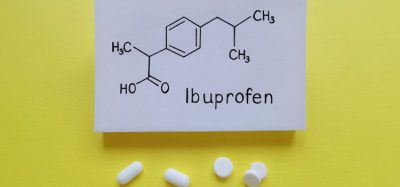Hot melt extrusion processing for the development of sustained release products
Posted: 15 April 2014 | | No comments yet
Hot Melt Extrusion (HME) has attracted increased interest for the development of pharmaceutical dosage forms over the last decade. It is a versatile processing technology which produces extrudates in the form of solid dispersions and solid solutions. Among the various applications, HME has been adopted for the development of sustained release dosage forms by using a wide range of pharmaceutical excipients such as polymers or lipids. In this review, we highlight the development and recent trends of sustained release dosages manufactured by extrusion processing.
HME processing is widely used in the food and plastic industry, but it has found ground for pharmaceutical applications such as increasing solubility / dissolution of water insoluble drugs, taste masking of bitter substances, sustained / controlled release formulations, transdermal / transmucosal films and implants. It is a “process of pumping raw materials with a rotating screw under elevated temperature through a die into a product of uniform shape1.” By using the appropriate downstream process equipment, it can effectively produce granules, pellets, spheres or even tablets and capsules (calendering). However, the major advantage of HME over conventional formulation techniques (e.g. granulation, spray-drying) is the capability to operate as a continuous manufacturing technology with fewer production steps, absence of organic solvent / water, decreased environmental implications, high throughput and reduces cost in waste, manpower and footprint. Lastly, HME can be coupled with process analytical tools (PAT) such as NIR / Raman spectroscopic probes for the design, analysis and control of the manufacturing process by measuring critical quality and performance attributes2,3. Thus, a better understanding of the extrusion processing and quality of the finished products can be achieved in compliance with pharmaceutical regulatory authorities.
The development of sustained and controlled release (included under the term prolonged release) aims to control the release rate of the active substance leading to controlled drug adsorption in the gastrointestinal tract. This type of oral dosage offers several benefits including control of the therapeutic dose for absorption at the desired delivery rate and hence stable plasma levels of the drug with a therapeutic effect over longer periods. The reduction of the side effects allows minimisation of the dosing frequency, which in turn improves the therapy, cost–effectiveness and patient compliance.
Sustained release polymeric matrices prepared via HME
The investigation of polyethylene oxide (PEO) as a sustained release polymeric carrier for chlorpheniramine maleate (CPM) was firstly reported by McGinity et al by extruding rod-shaped tablets4. It was found that the PEO molecular weight, drug loading percentage and the inclusion of the PEO influenced the drug dissolution rates. The PEO erosion and the drug diffusion through the created swollen gel on the tablet surface controlled the release patterns of the matrix tablets while CPM was molecularly dispersed within the PEO matrix.
Another interesting approach for the manufacturing of ibuprofen sustained release mini-matrices (multiple unit dosage forms) was introduced by Verhoeven et al who combined xanthan gum (XG), a hydroplilic polymer and ethylcellulose (EC). By altering the XG/EC ratio the drug release rate was modified and increased with increasing XG concentrations5. The particle size of XG was another critical attribute as drug release was fast with coarser XG sizes but slow and reproducible with fine particles. Clinical trials with dogs showed the high Cmax and Tmax for 30 per cent XG compared to those for 20 per cent XG. These values of the extruded mini-matrices were similar to the Ibu-Slowâ formulation, suggesting that they behaved as single unit dosage form due to the immediate swelling upon contact with the GI-tract fluids.
Similar polymer combinations applied for metoprolol tartrate to produce zero order release mini-matrices. On this occasion, the authors investigated the effect of XG concentration (1 – 20 per cent w/w), the ratio of the plasticiser (DBS, dibutyl sebacate) and the extrusion processing parameters6. The optimisation of these particular formulations allowed the extrusion at low temperatures (60 – 80°C) with smooth extrudates independently of the XG concentrations (Figure 1). Another interesting outcome was that the extrudate quality was not affected by the feed and screw rates but it was also was possible to apply lower barrel temperatures when these rates were increased. Some drawbacks of the developed polymeric formulations were the stability at accelerated conditions due to the hydrophilic nature of XG and the low flexibility of XG to further optimise the drug release.
An advanced approach has been used to develop a multilayer (core/coat) dosage form via co-extrusion, where the core provided sustained drug release and the coat immediate drug release7. Here, two extruders connected through a co-extrusion die and the two melts were combined to form two concentric layers, a core and a coat. A wide range of thermoplastic polymers was screened for the purposes of the study and eventually a combination of polycaprolactone (core) and polyethylene oxide (coat) to prepare solid dispersions of Metoprolol tartrate (MPT) and hydrochlorothiazide (HCT) respectively. The HCT polymeric coat was designed to dissolve rapidly while the caprolactone core remained intact and MPT release was diffusion controlled. A clinical trial was conducted in dogs and showed no significant differences in the bioavailability (Cmax, Tmax and AUC) between the extruded matrices (filled in hard gelatine capsules) and the Zok-Zidâ commercial product.
Sustained release formulations are possible to extrude by using different ethylene-vinyl-acetate grades (EVA)8. Polyethylene is a semicrystalline polymer with alternating crystalline lamellae (with different types of crystals) and amorphous domains while the incorporation of VA co-monomer units (9 – 40 per cent) into a polyethylene backbone chain induces differences in physicochemical properties. The main advantage of EVA is that it can be processed in the absence of a plasticiser while the drug release can be tailored by polymer grades, drug loading. A unique feature of EVA is the porous network created once the extrudates are exposed to the dissolution medium with the drug being released by means of percolation. The crystalline drug is released leaving an empty porous carcass (Figure 2). Further investigations demonstrated excellent stability of EVA and no effect on the GI ecosystem following oral administration.
More recently, a continuous processing approach was reported for the extrusion of paracetamol / starch formulations. The novelty of the process lies on the cutting equipment (rotary fly-cutter) adopted from the plastic industry and can operate in both a continuous and start-stop mode9. In order to optimise the process, particular attention was paid to screw configuration, temperature profiles and adjustment of cutting / extrusion speeds. The process was optimised for various starch grades and as shown in Figure 3, the extrudates showed regular shape with glassy surface.
Lipid extrusion for sustained release formulations
Solid lipids are natural and biodegradable excipients used for pharmaceutical applications due to low cost and non-toxic properties. Lipids can be used for sustained release of water soluble drugs, solubility / dissolution enhancement of water insoluble drugs, taste masking, floating formulations and decrease of gastric irritation. Extrusion processing was initially introduced by Breitkreutz et al for taste masking applications and later was introduced for sustained release formulations10.
An interesting feature of lipids is that they can be extruded at temperatures below their melting point through a process known as ‘cold extrusion’. Cold extrusion was adopted by Keleb et al who used low temperatures for the extrusion of polymeric formulations at ambient temperature11. Hence, cold extrusions can prove advantageous for the processing of thermal labile drugs. The lipid composition plays a key role on the physicochemical properties of the extrudates. It has been proved that the softening of certain lipids instead of complete melting can avoid the formation of low-melting, metastable polymorphs12. Lipids can undergo phase transformations (change of the colour indicates recrystallisation) and produce porous structures if extruded above their melting points. The extrusion of lipids below the melting point usually results in slower release rates compared to those of extruded lipids above the melting range. However, this is not always the case due to the occurrence of the ‘blooming effect’ where sharp fractal structures are observed with lower extrusion temperatures leading to faster drug release rates. Thus it is critical to identify the optimal processing parameters. Furthermore, the stability of lipid-extruded formulations under accelerated conditions is very important for successful formulation development.
Several studies demonstrated that stability depends on the lipid composition, the applied heat energy, shear / friction forces. Heterogeneous lipid compositions show long crystallisation times while homogeneous compositions crystallise faster. In addition, the length of the fatty acid chain length of the lipids has a significant impact and longer chains present slower drug dissolution rates13-15. The contact angle of the extruded surfaces increases with increasing chain length of the lipid leading to decreased wetting ability and hence decreased dissolution rates.
The die diameter has also proven to be a key factor for the development of extruded formulations16. It influences the final drug loading, the release rates, the shape / morphology of the extrudates, taste masking and causes electrostatic charging. Small die diameters can increase drug loading up to 80 – 90 per cent and the drug release rates. However, in another study it was shown that the release rates depend on the lipophilicity / hydrophobicity of the drug substance17. The use of small dies can cause electrostatic charging and thus it is important to add an antistatic agent (e.g. PEG) to eliminate these problems. Interestingly, small dies facilitate effective taste masking as the suspended drug particles evade the resistance of the die plate walls and form a thin layer of soften lipid on the surface of the extrudates. The larger die diameters result in irregular shapes and increase intersections of the milled extrudates.
The drug release rates from extruded lipid matrices can be tailored by incorporating various excipients such as PEG, PVP and inorganic excipients18,19. The addition of hydrophilic matrices increases the release rates as a function of the molecular weight whereby they dissolve quickly and form an interconnected pore network, which enhances the drug release. Similarly the addition of inorganic excipients can facilitate drug release but to a smaller extent as its solubilising capacity is hindered. The addition of hydrophilic materials can cause stability issues and hence the appropriate selection of lipids is important. The presence of the aforementioned excipients in lipid extruded matrices showed excellent stability under accelerated conditions. Recently, Robleg et al introduced vegetable calcium stearate (CaSt) as a thermoplastic excipient for the development of sustained release paracetamol pellets20. CaSt is a mixture of insoluble calcium salts of various fatty acids, mainly consisting of stearic and palmitic acids and minor proportions of other fatty acids. The drug release was diffusion controlled and left a porous network on the pellet surface.
Scale – up of lipid extruded formulations can be achieved in a continuous manner as it was shown by Witzleb et al (Figure 4) and compared with extrudates produced batchwise17. The comparison of the two approaches showed larger, coarse and smaller fine fraction with a small extent of agglomeration for the continuous mode compared to the batchwise extrudates. However, the dissolution patterns of both extruded samples showed almost no difference (f2 =76,7).
Furthermore, some recent trends in lipid extrusion introduced a) a two-step extrusion process21 and b) extrusion of pre-mixed formulations18. In the first occasion, the drug is initially extruded with a hydrophilic polymer (e.g. PEG) followed by milling and subsequently in the second extrusion step the milled extrudates are processed with the lipid matrix. This process can successfully lead to tailoring of drug release profiles by adjusting the percentage of the hydrophilic excipient. In the second process, Vithani et al18 extruded pre-mixed batches (complete tablet formulations) with various drug loadings to produce sustained release formulations of sodium diclofenac. The high drug loaded extruded tablets compared with compressed tablets of the same formulations (only the drug/lipid were extruded) and showed sustained drug release rates for more than 12 hours.
Conclusions
HME processing is a versatile technology, which can be successfully used for the development of sustained release pharmaceutical dosage forms. Due to the process flexibility, a wide range of polymers, lipids or co-processed materials can be extruded to tailor the release profiles according to the desired specifications. A careful consideration of the processing parameters and understanding of the investigated formulations it is possible to apply hot or cold extrusion and develop stable extrudates in the form of granules, pellets or tablets. HME is a process that can easily be scaled-up in a continuous mode but also to integrate PAT approaches for quality control and process monitoring.
References
- Crowley M.M, Zhang E., Repka M.A., Thumma S., Upadhye S.B., Battu S.K., McGinity J.W, Martin C. Pharmaceutical applications of hot-melt extrusion:part I, Drug Dev. Ind. Pharm. 2007, 33, 909–926
- Fonteyne M, Soares S, Vercruysse J, Peeters E, Burggraeve A, Vervaet C, Remon JP, Sandler N, De Beer T. Prediction of quality attributes of continuously produced granules using complementary pat tools. Eur J Pharm Biopharm. 2012 82(2):429-36
- Moradiya H., Islam M.T., Woollam G.R, Slipper I.J., Halsey S., Snowden M.J., Douroumis D. Continuous cocrystallization for dissolution rate optimization of a poorly water-soluble drug . Cryst. Growth Des. 2014, 14 (1), 189–198
- Zhang F., McGinity J.W. Properties of sustained-release tablets prepared by hot-melt extrusion. Pharm Dev Technol. 1999, 4(2):241-50
- Verhoeven E., Vervaet C., Remon J.P. Xanthan gum to tailor drug release of sustained-release ethylcellulose mini-matrices prepared via hot-melt extrusion: in vitro and in vivo evaluation. Eur. J Pharm. Biopharm. 2006, 63 320–330
- Verhoeven E., De Beer T.R.M., Van den Mooter G., Remon J.P., Vervaet C. Influence of formulation and process parameters on the release characteristics of ethylcellulose sustained-release mini-matrices produced by hot-melt extrusion. Eur. J Pharm. Biopharm 2008, 69 312–319
- Dierick L, Saerens L., Almeida A., De Beer T., Remon J.P., Vervaet C. Co-extrusion as manufacturing technique for fixed-dose combination mini-matrices. Eur. J Pharm. Biopharm. 2012 81 683–689
- Almeida A., Possemiers S., Boone M.N., De Beer T., Quinten T., Van Hoorebeke L., Remon, J.P., Vervaet C. Ethylene vinyl acetate as matrix for oral sustained release dosage forms produced via hot-melt extrusion. Eur. J Pharm. Biopharm 2011, 77 297–305
- Kipping T., Rein H. A new method for the continuous production of single dosed controlled release matrix systems based on hot-melt extruded starch: Analysis of relevant process parameters and implementation of an in-process control. Eur. J Pharm. Biopharm 2013 4 156–171
- Breitkreutz J., El-Saleh F., Kiera C., Kleinebudde P., Wiedey W. Pediatric drug formulations of sodium benzoate: II. Coated granules with a lipophilic binder. Eur. J Pharm. Biopharm 2003, 56, 255–260
- Keleb E.I., Vermeire A., Vervaet C., Remon J.P. Cold extrusion as a continuous single-step granulation and tabletting process. Eur. J Pharm. Biopharm 52 (2001) 359–368
- Reitz, P. Kleinebudde. Solid lipid extrusion of sustained release dosage forms. Eur. J Pharm. Biopharm 2007, 67, 440–448
- Windbergs M., Strachan C.J., Kleinebudde P. Tailor-made dissolution profiles by extruded matrices based on lipid polyethylene glycol mixtures. J. Control. Release 2009, 137, 211–216
- Windbergs M., Strachan C.J., Kleinebudde P. Influence of structural variations on drug release from lipid/polyethylene glycol matrices. Eur. J. Pharm. Sci. 2009, 37, 555–562
- Windbergs M., Strachan C.J., Kleinebudde P. Understanding the solid-state behaviour of triglyceride solid lipid extrudates and its influence on dissolution. Eur. J Pharm. Biopharm. 2009, 71, 80–87
- Michalk A., Kanikanti V.R., Hamann H.J., Kleinebudde P. Controlled release of active as a consequence of the die diameter in solid lipid extrusion. J. Control. Release, 2008, 132, 35–41
- Witzleb R., Kanikanti V.R., Hamann H.J., Kleinebudde P. Solid lipid extrusion with small die diameters – Electrostatic charging, taste masking and continuous production. Eur. J Pharm. Biopharm. 2011, 77, 170–177
- Vithani K, Maniruzzaman M, Slipper IJ, Mostafa S, Miolane C, Cuppok Y, Marchaud D, Douroumis D. Sustained release solid lipid matrices processed by hot-melt extrusion (HME). Colloids Surf B Biointerfaces. 2013,110:403-10
- Vithani K, Cuppok Y, Mostafa S, Slipper IJ, Snowden MJ, Douroumis D. Diclofenac sodium sustained release hot melt extruded lipid matrices. Pharm Dev Technol. 2014 19(5):531-8
- Roblegg E., Jäger E., Hodzic A., Koscher G., Mohr S., Zimmer A., Khinast J. Development of sustained-release lipophilic calcium stearate pellets via hot melt extrusion. Eur. J Pharm. Biopharm. 2011, 79, 635–645
- Windbergs M, Gueres S., Strachan C.J., Kleinebudde P. Two-Step solid lipid extrusion as a process to modify dissolution behavior. AAPS PharmSciTech. 2010, 11, 2-8
Biography
Dr Dennis Douroumis is a Reader in Pharmaceutical Sciences at the University of Greenwich and the Director of Centre for Innovation in Process Engineering and Research (CIPER). His research focuses on the development of oral solid dosage forms, nanomedicine and medical devices.
He is member of the Board of the Academy of Pharmaceutical Sciences (APS) and is an Editorial Board member of more than five international journals including the Wiley’s Editorial Board for the series in ‘Advances in Pharmaceutical Technology’. He has published more than 120 peer-reviewed publications, including 50 full papers, four book chapters and two books (Wiley –Blackwell) in ‘Hot Melt Extrusion Pharmaceutical Applications’ and ‘Drug Delivery Strategies of Poorly Water Soluble Drugs’.
The CIPER Centre in collaboration with Thermo Scientific (Karlsruhe) specialises in continuous manufacturing of various solid dosage forms such as increase solubility of water insoluble APIs, taste masking of bitter drugs (paediatric products), controlled / sustained release formulations and continuous cocrystallisation. HME processing involves the use of QbD approaches and PAT tools (in-line NIR) for the development of continuous manufacturing.









